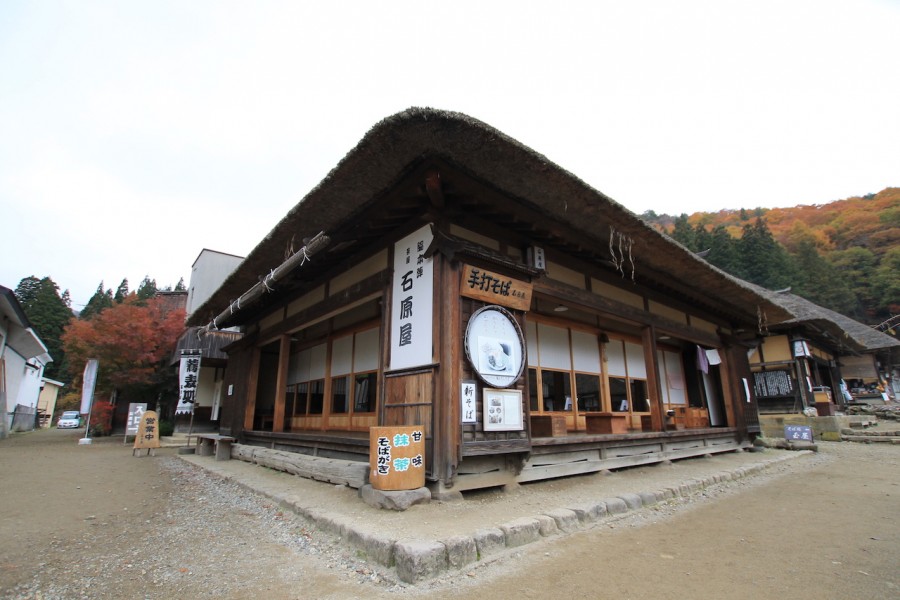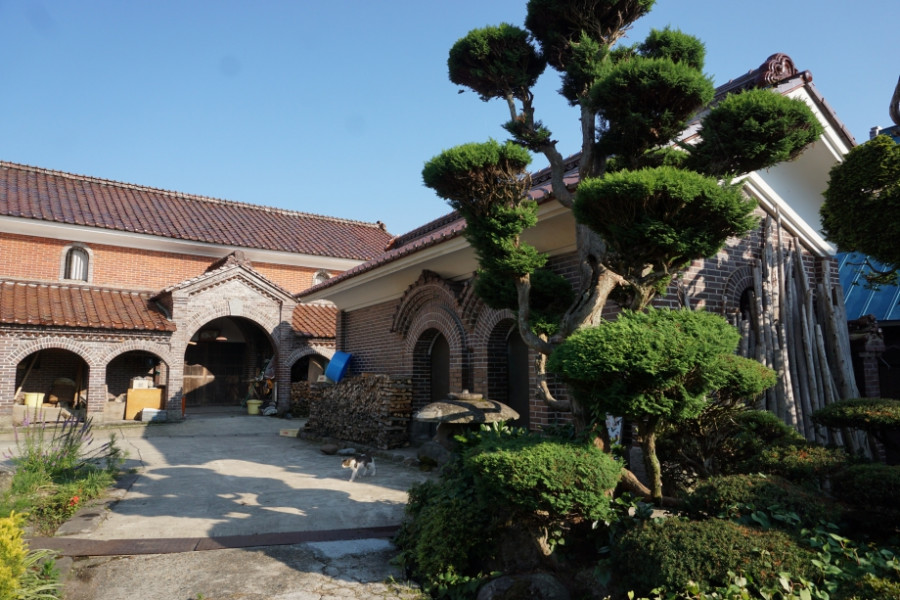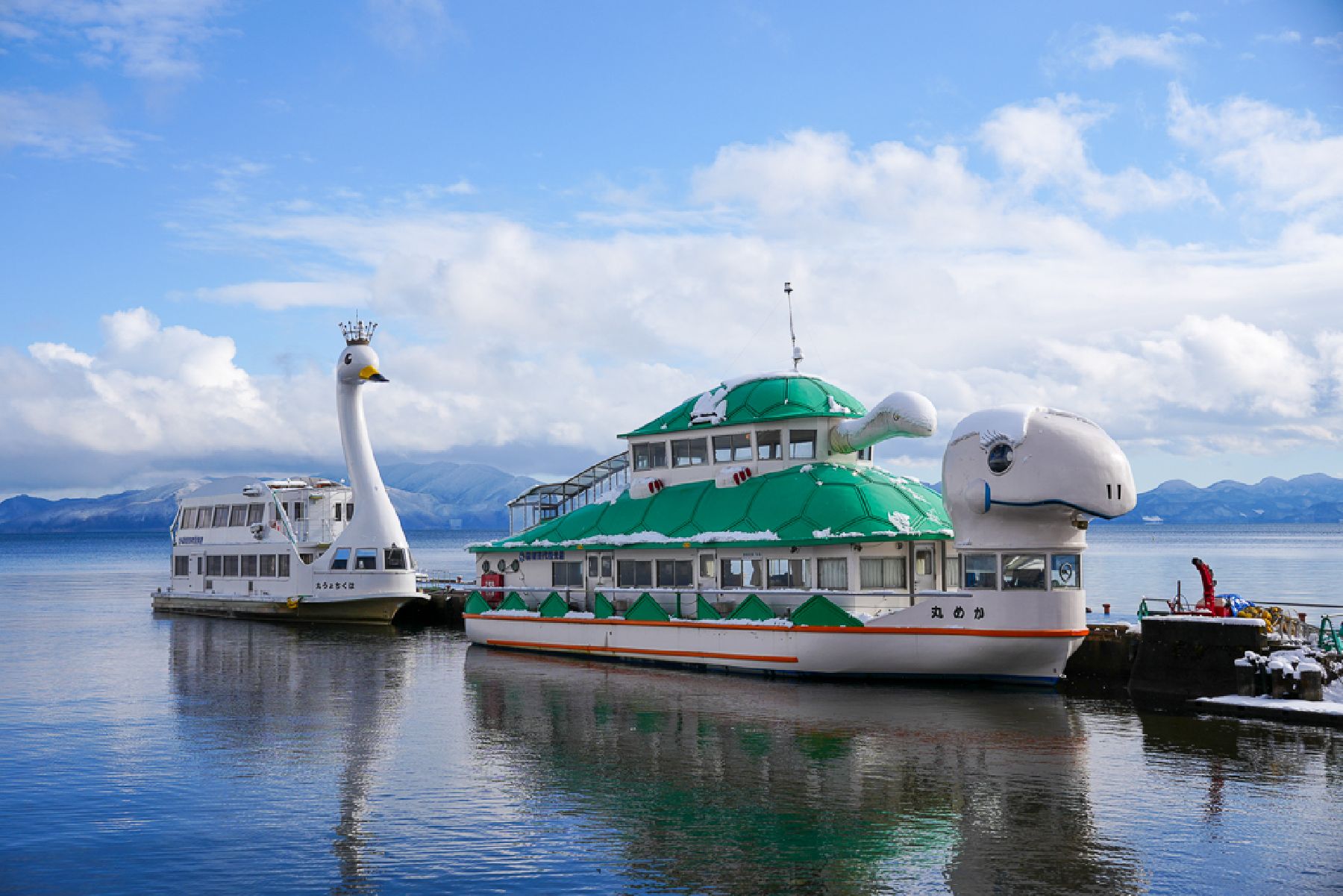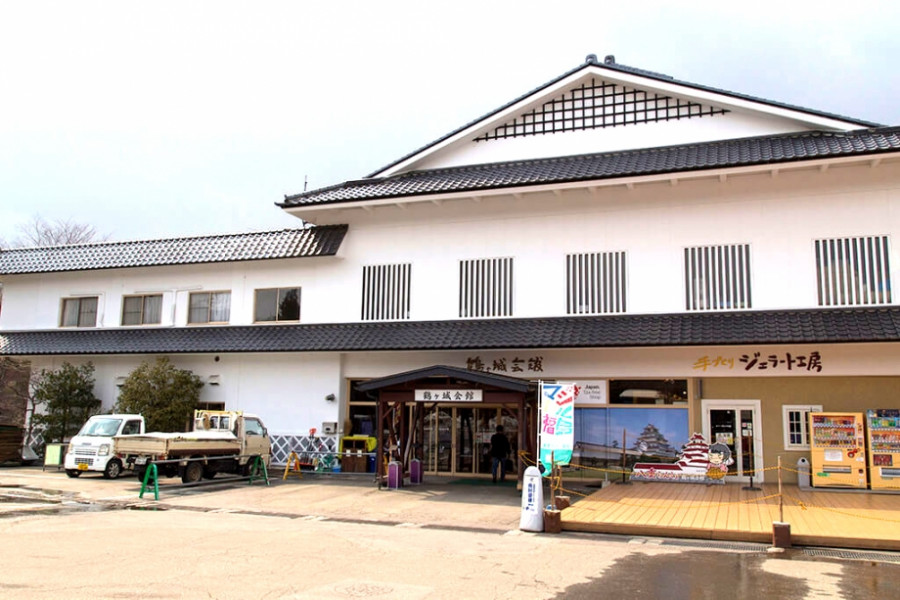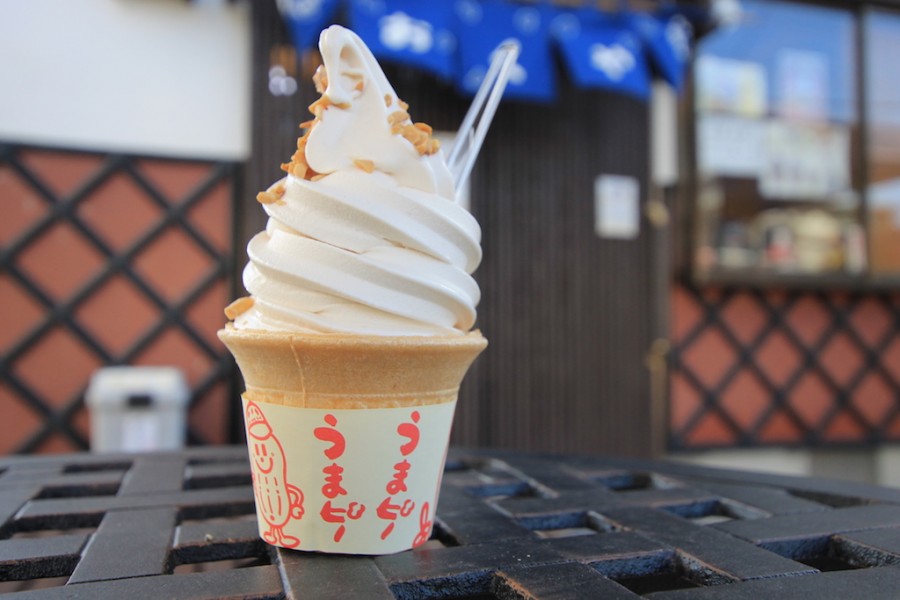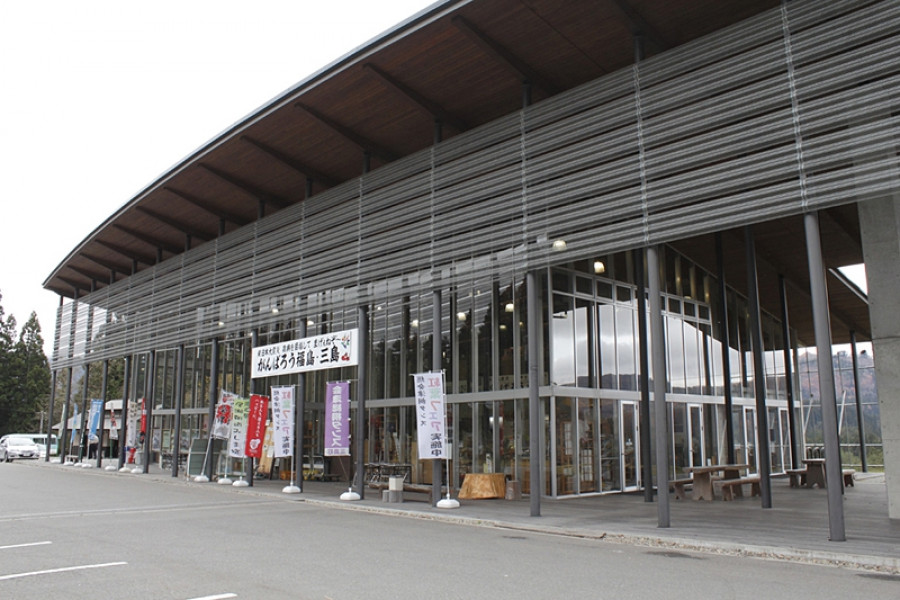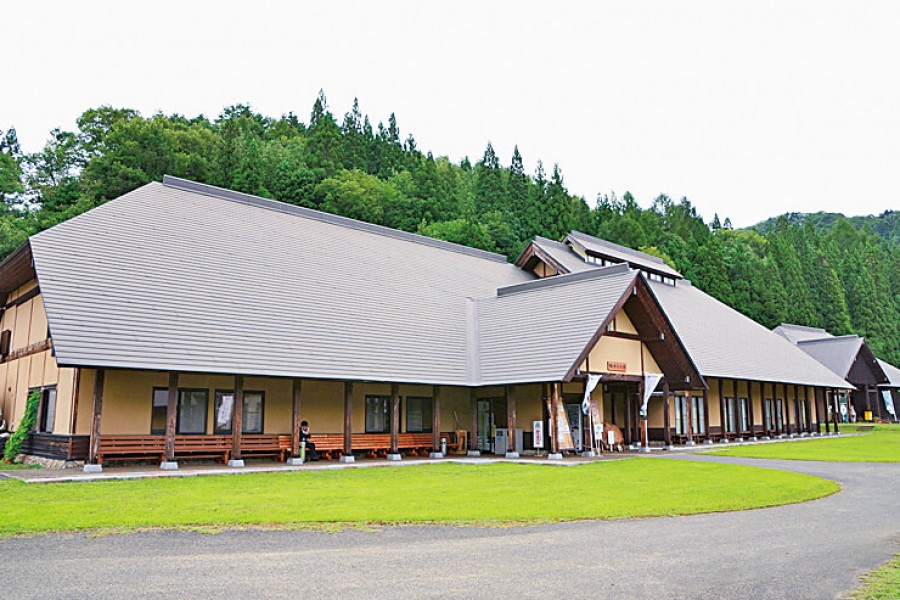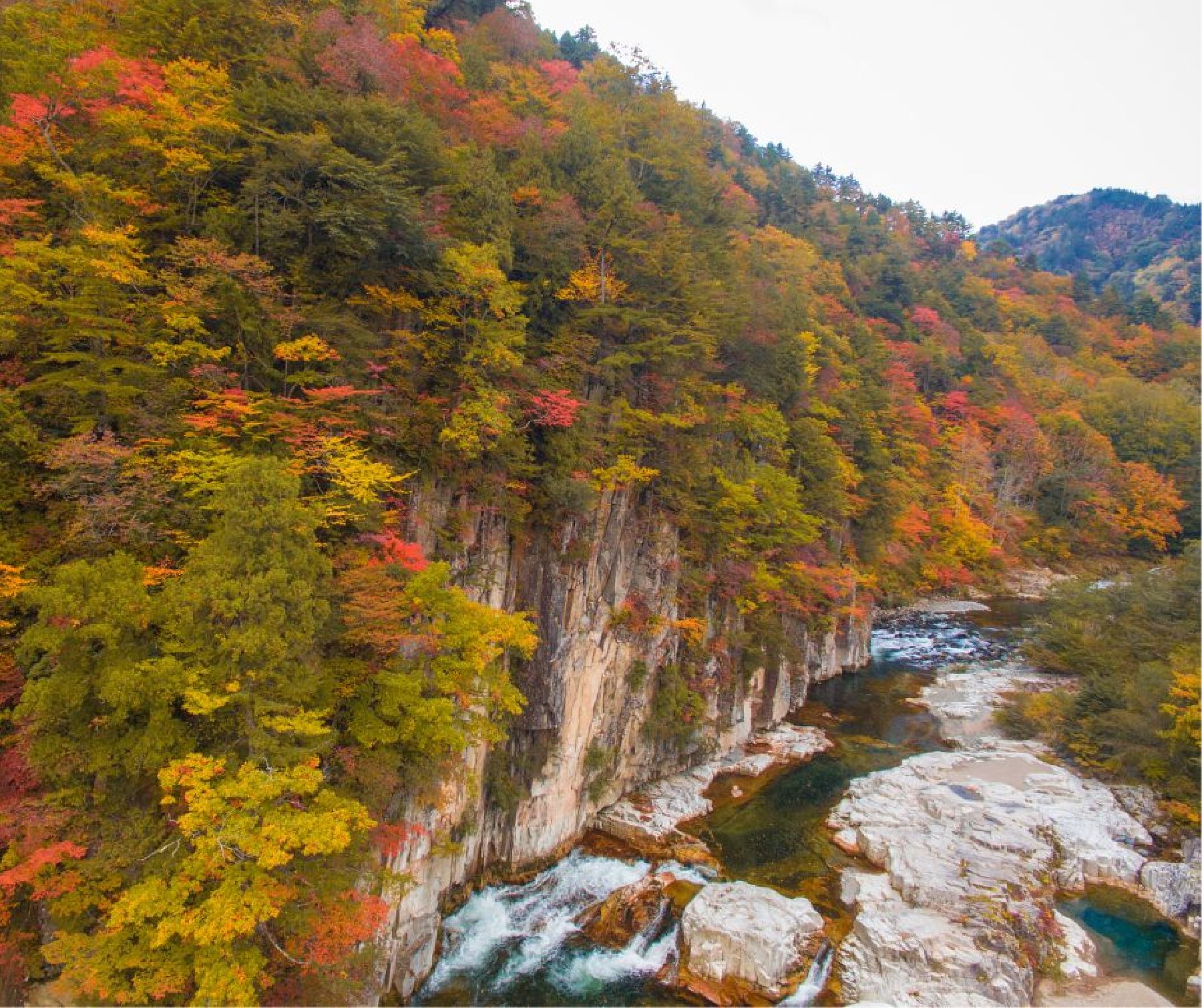
Byobuiwa Crags
The Byobuiwa Crags (屏風岩) are a rock formation in Minamiaizu, in the Southern area of Fukushima Prefecture. The rocks have eroded through many years to their current shape. The crags are light in color, offering an interesting contrast with the blue of the gushing Ina river, and the vibrant colors of the surrounding foliage, creating a scenery that becomes particularly poignant during the autumn. Visitors can stroll the walking course around the crags, which takes approximately 20 minutes to be completed and includes several interesting picture spots.
